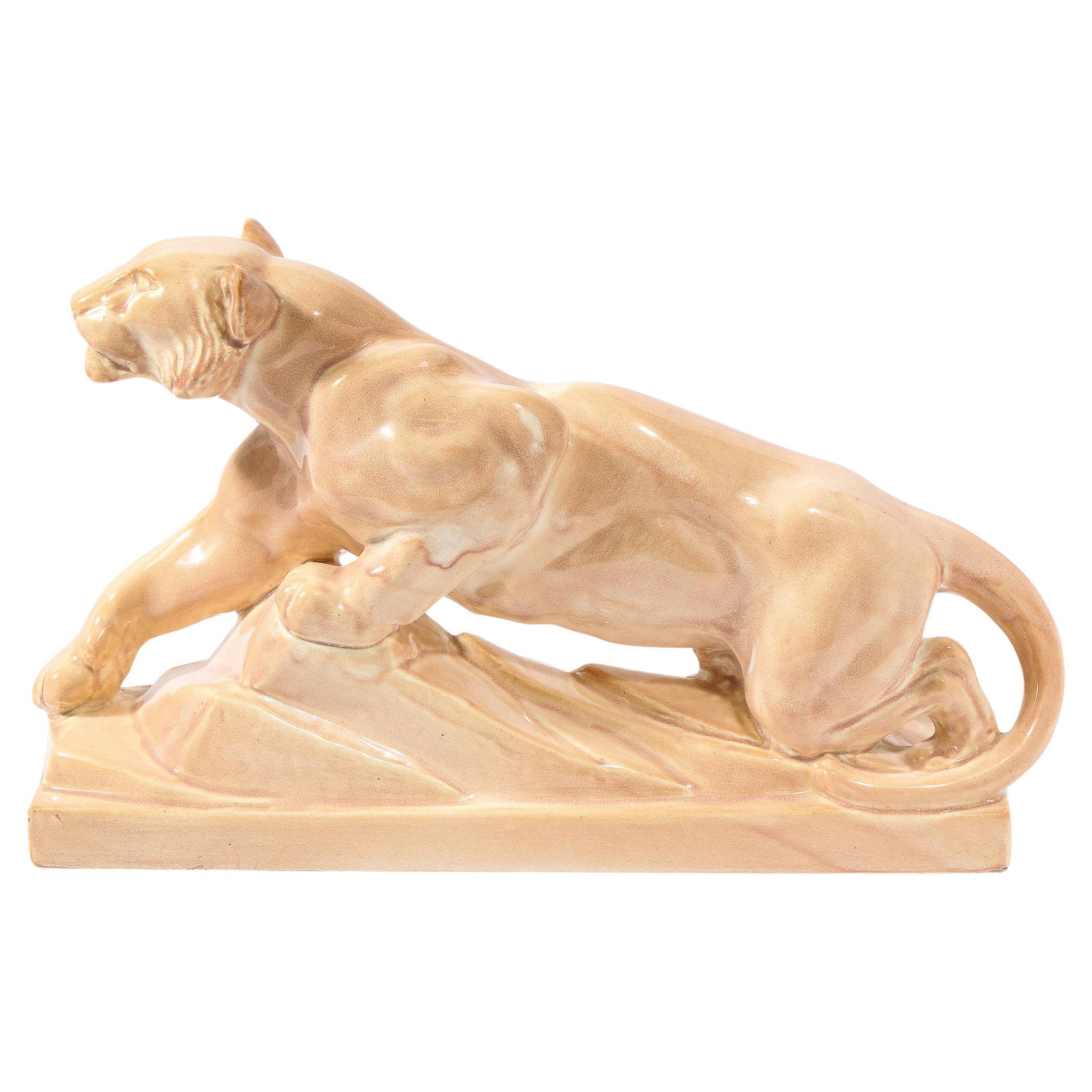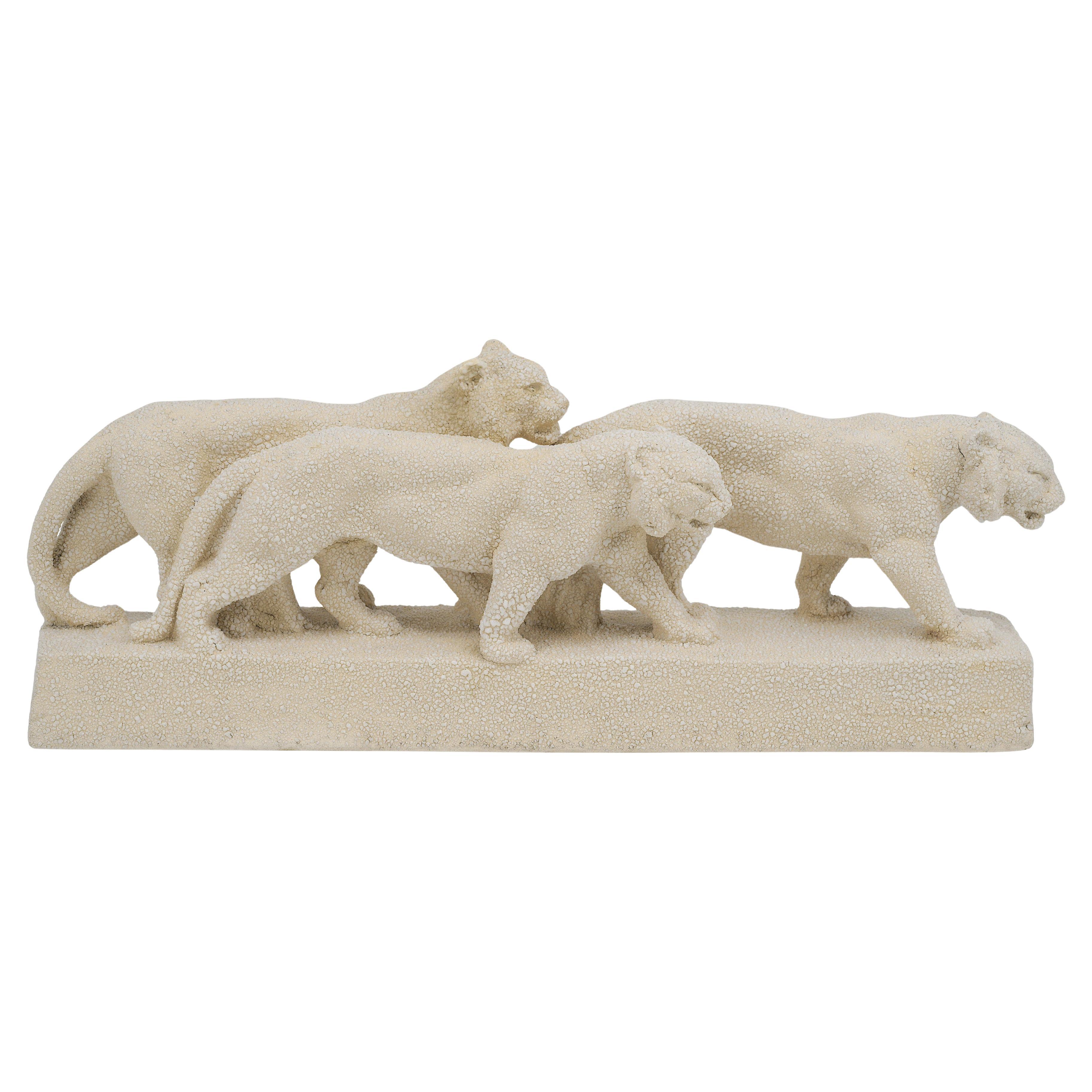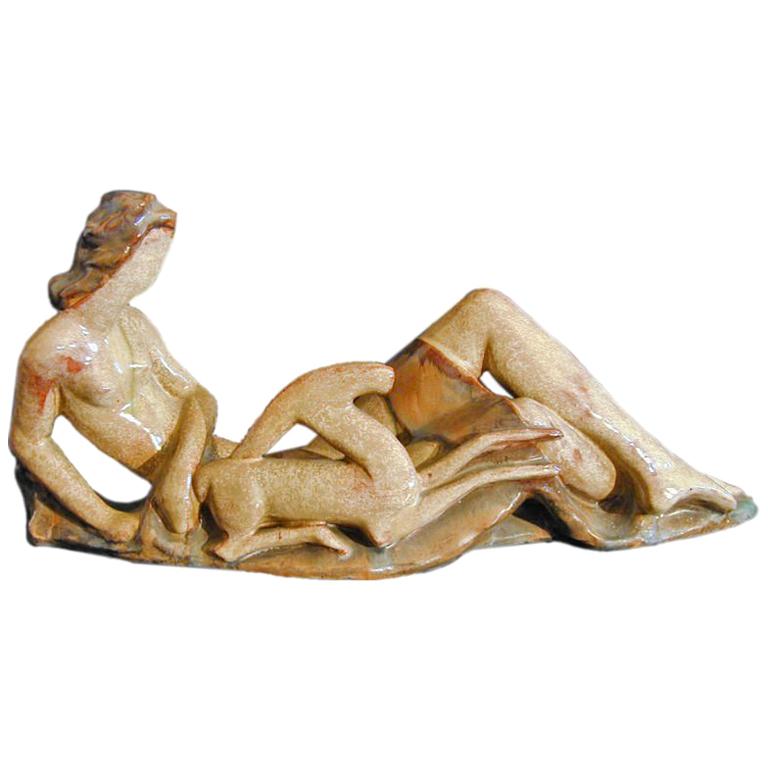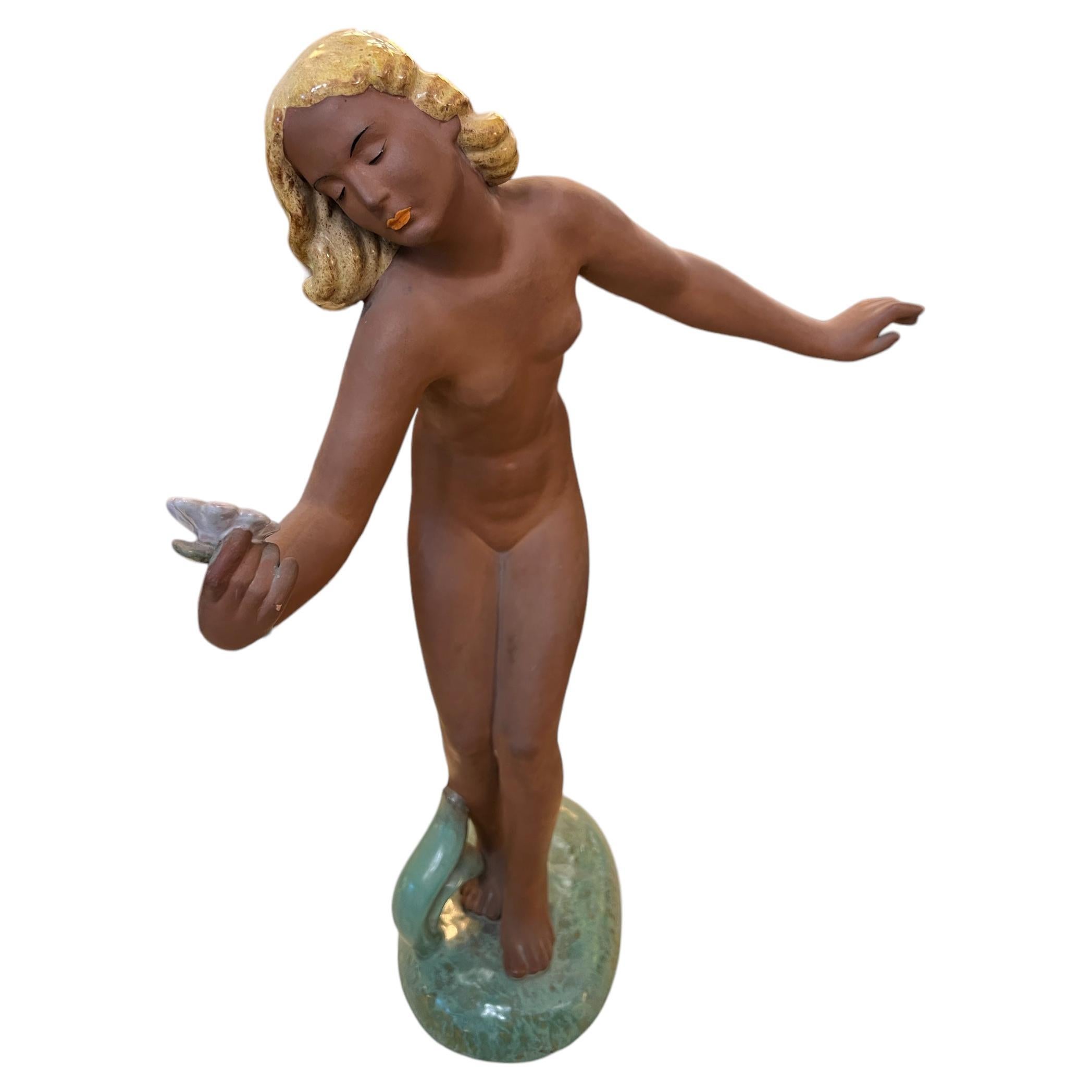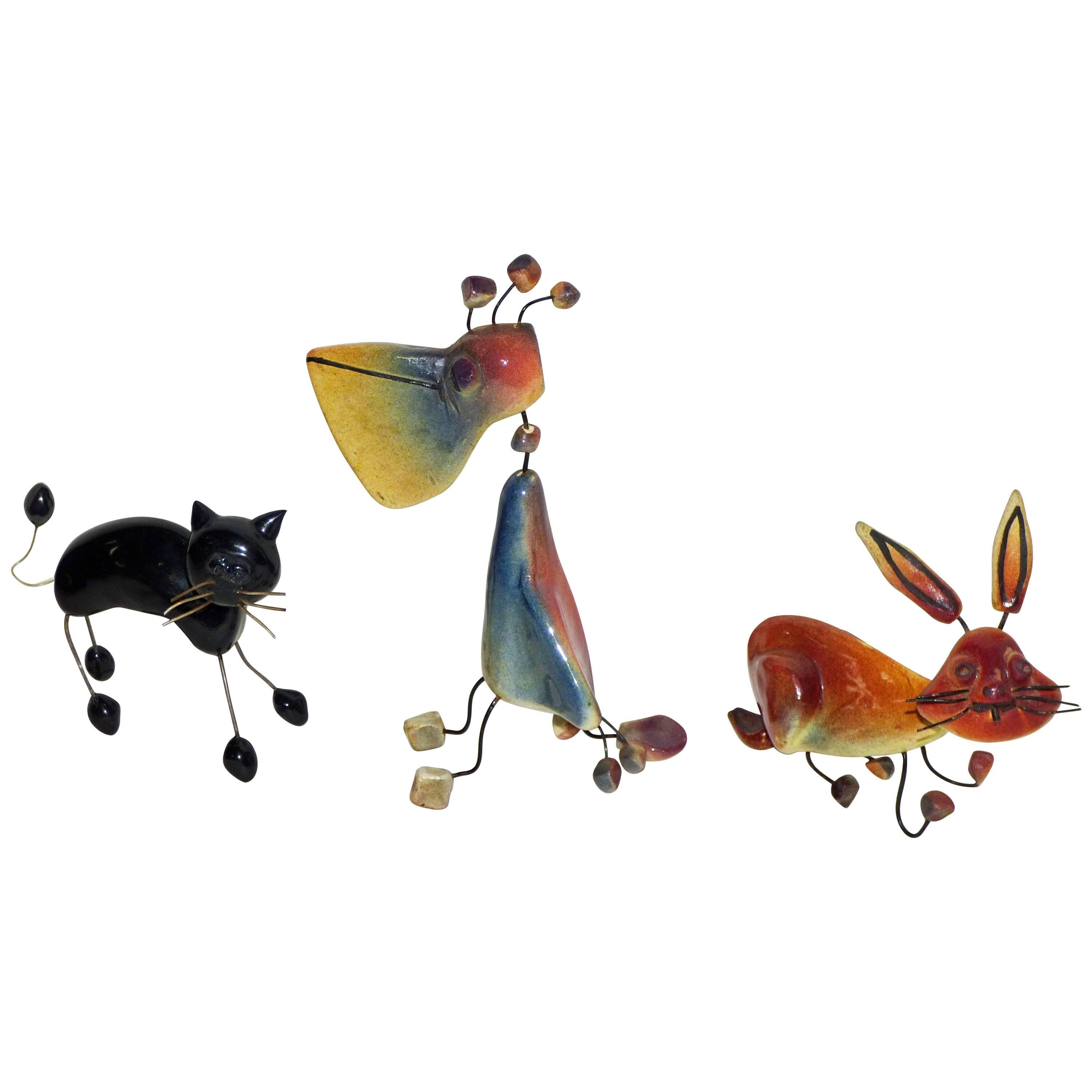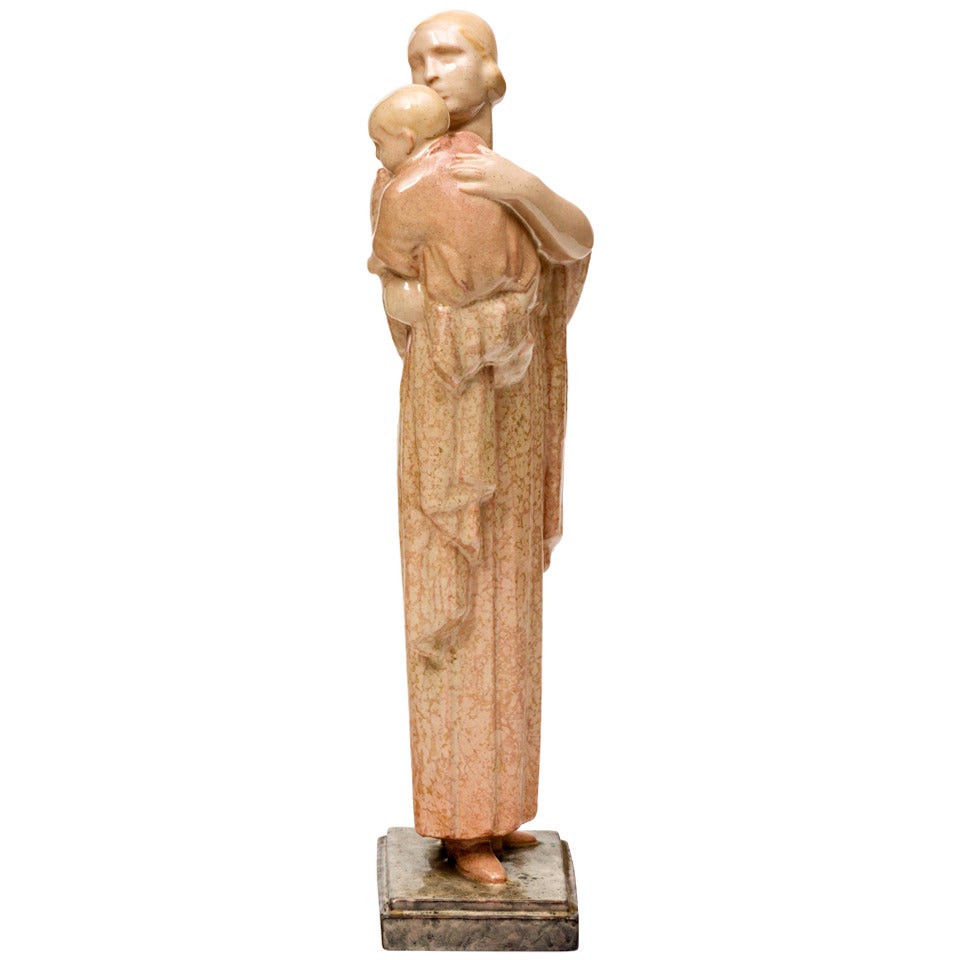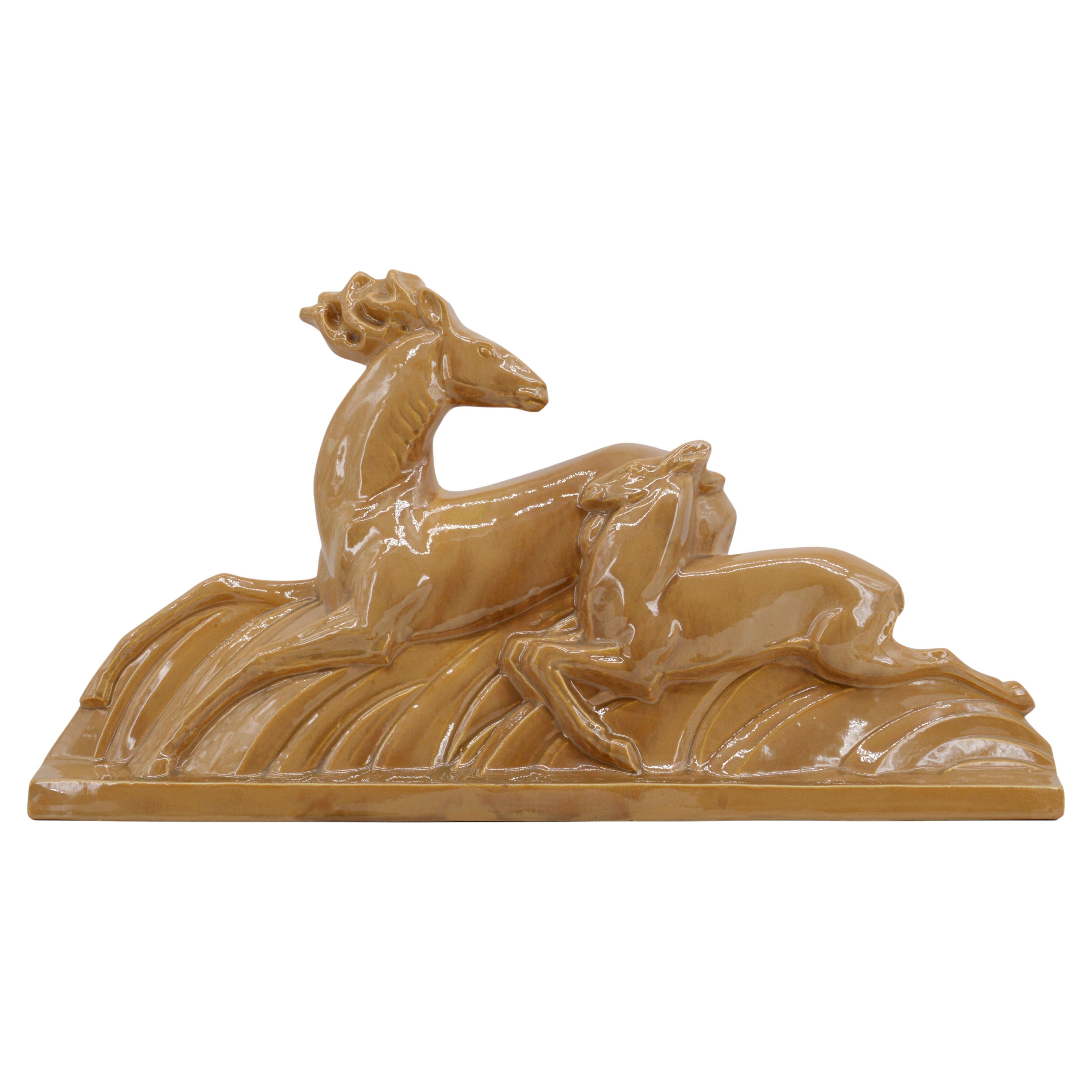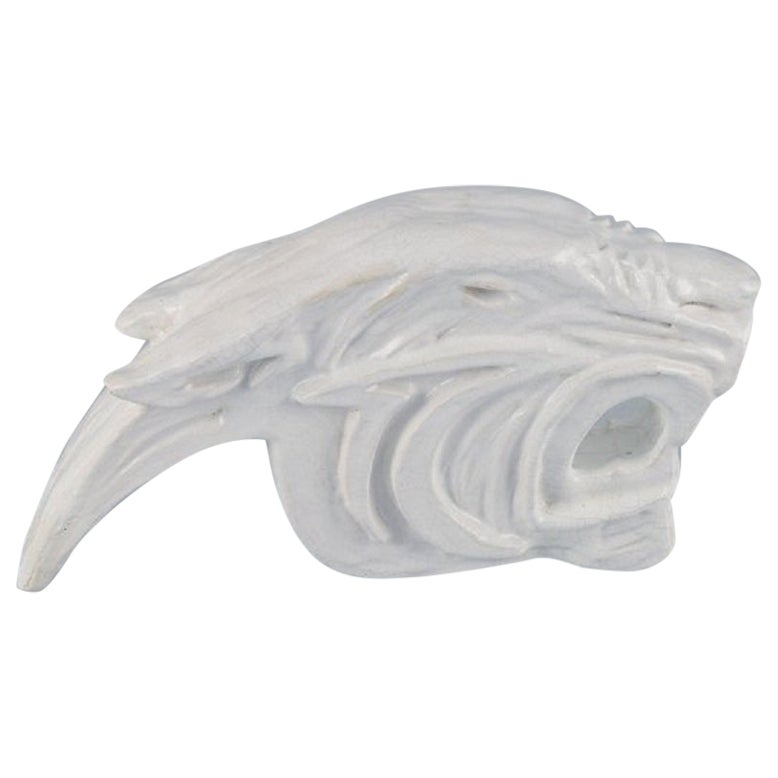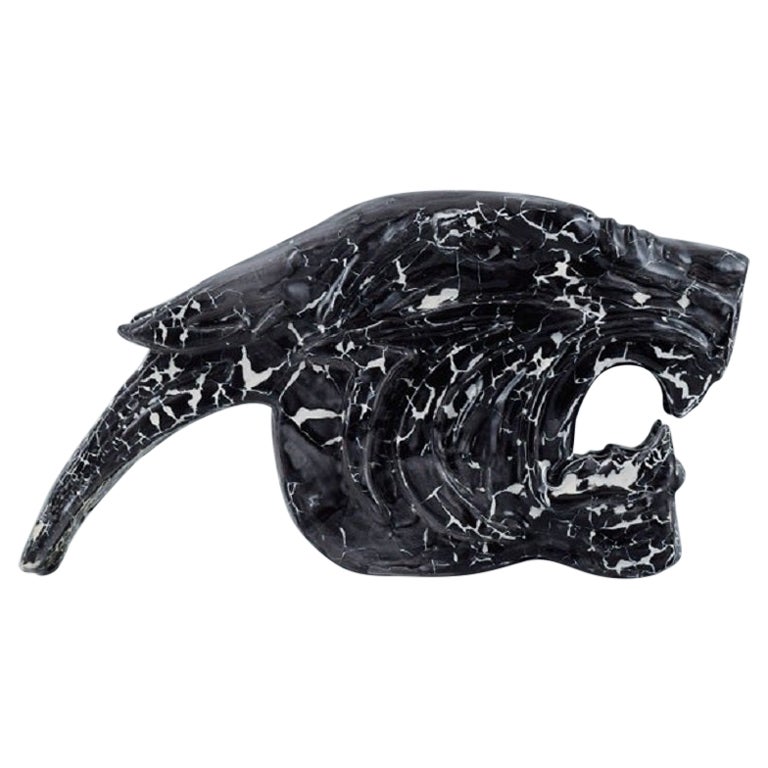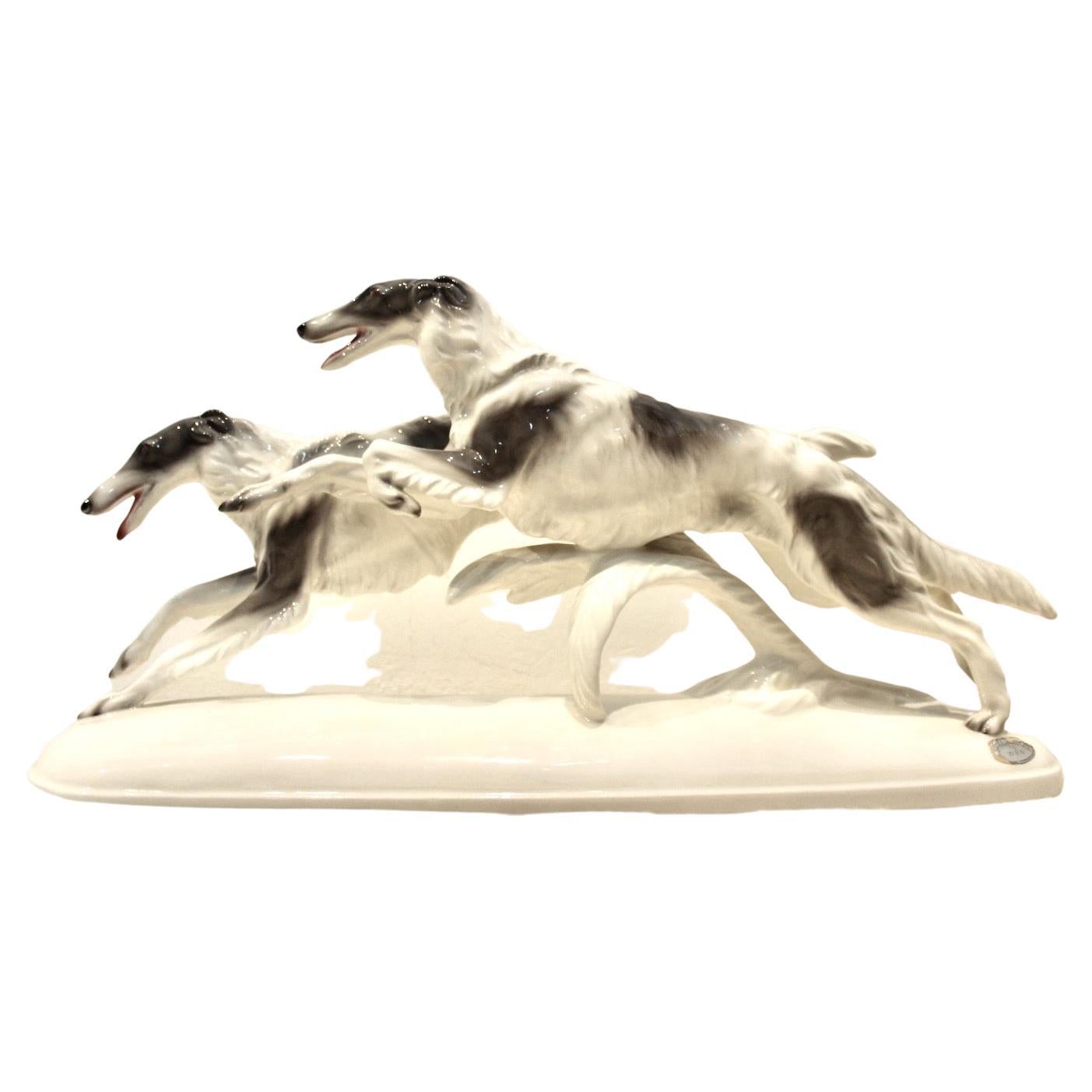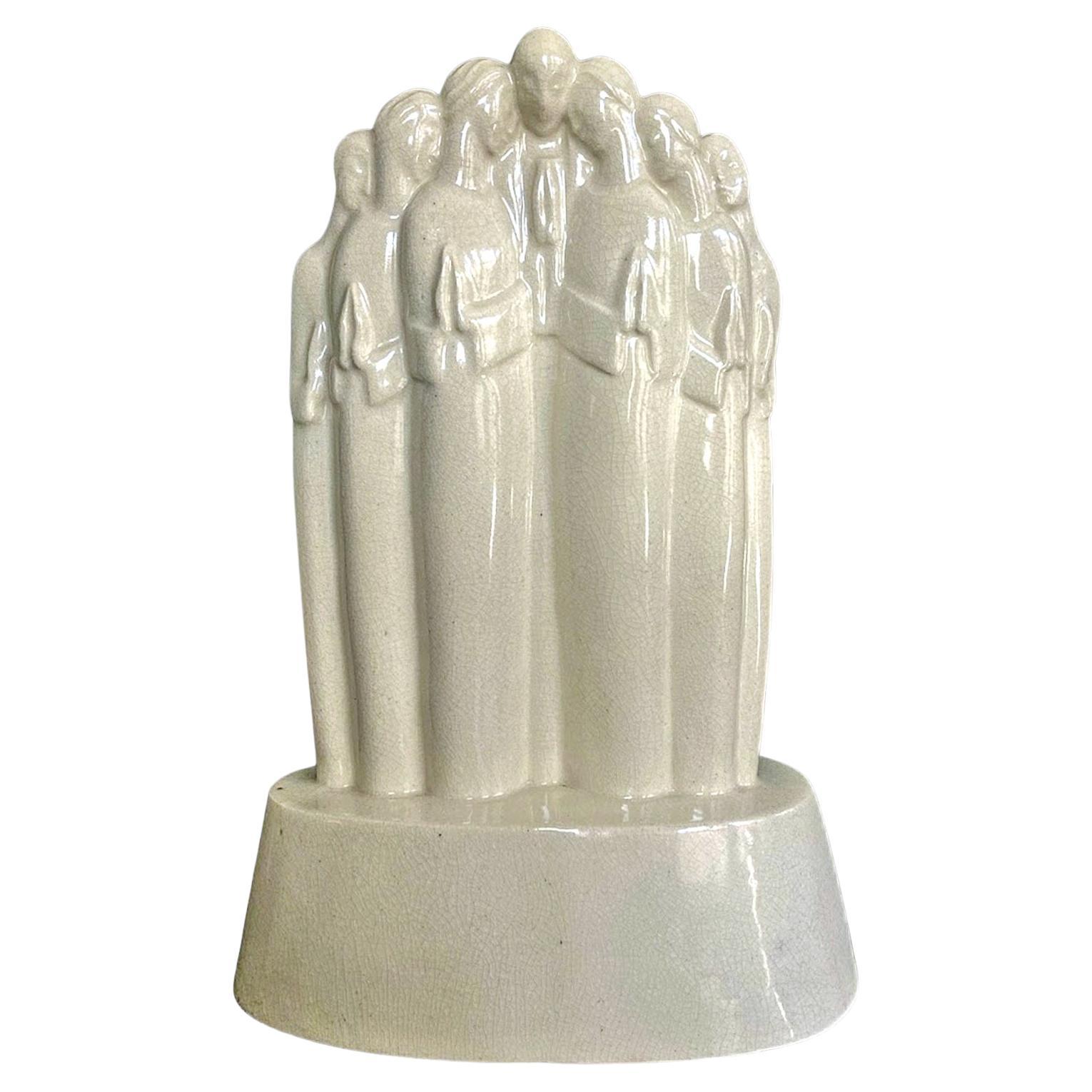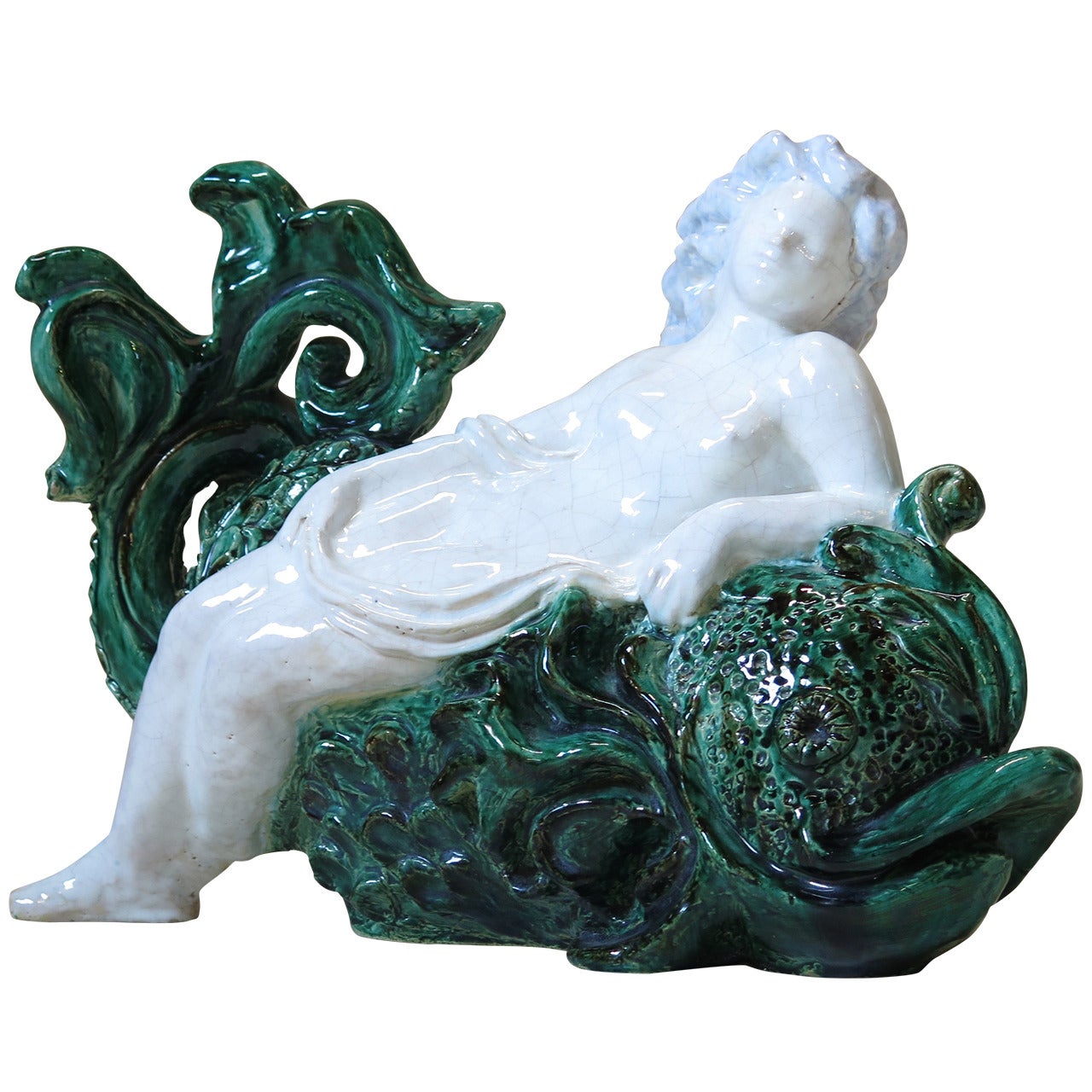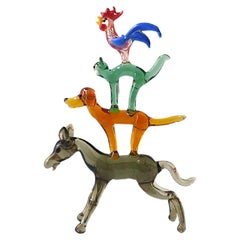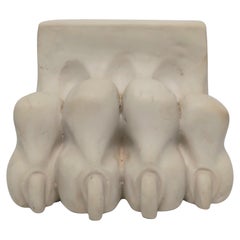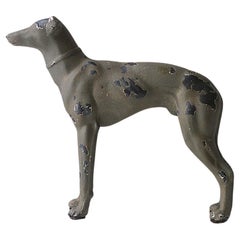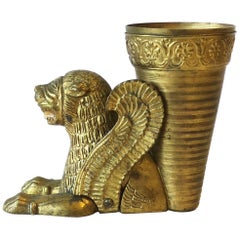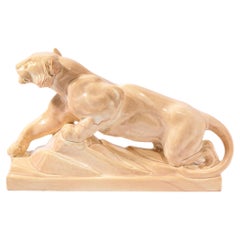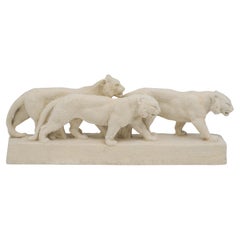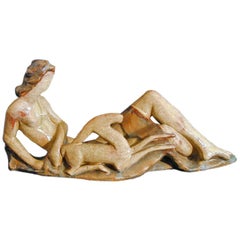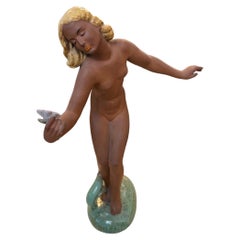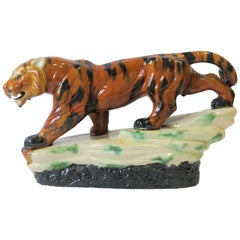
Tiger Cat Animal Ceramic Sculpture in the Art Deco Style
View Similar Items
Want more images or videos?
Request additional images or videos from the seller
1 of 18
Tiger Cat Animal Ceramic Sculpture in the Art Deco Style
About the Item
- Dimensions:Height: 10 in (25.4 cm)Width: 17.5 in (44.45 cm)Depth: 5 in (12.7 cm)
- Style:Art Deco (In the Style Of)
- Materials and Techniques:
- Place of Origin:
- Period:
- Date of Manufacture:circa 20th Century
- Condition:Wear consistent with age and use. - Book shown for photo-op only.
- Seller Location:New York, NY
- Reference Number:1stDibs: LU1314211182501
About the Seller
5.0
Vetted Professional Seller
Every seller passes strict standards for authenticity and reliability
Established in 2010
1stDibs seller since 2015
2,105 sales on 1stDibs
Authenticity Guarantee
In the unlikely event there’s an issue with an item’s authenticity, contact us within 1 year for a full refund. DetailsMoney-Back Guarantee
If your item is not as described, is damaged in transit, or does not arrive, contact us within 7 days for a full refund. Details24-Hour Cancellation
You have a 24-hour grace period in which to reconsider your purchase, with no questions asked.Vetted Professional Sellers
Our world-class sellers must adhere to strict standards for service and quality, maintaining the integrity of our listings.Price-Match Guarantee
If you find that a seller listed the same item for a lower price elsewhere, we’ll match it.Trusted Global Delivery
Our best-in-class carrier network provides specialized shipping options worldwide, including custom delivery.More From This Seller
View AllFolk Art Animal Sculpture
Located in New York, NY
A beautiful art glass animal sculpture, Folk Art design, circa mid-20th century. Sculpture is hand-blown art glass of farm animals, from base to top, a horse, dog, cat, and rooster. ...
Category
Mid-20th Century Folk Art Animal Sculptures
Materials
Blown Glass, Art Glass
Tiger or Lion Cat Paw Decorative Object or Bookend the Empire Style
Located in New York, NY
A substantial tiger or lion cat animal paw decorative object sculpture or bookend, in the Empire design style, circa late-20th century. A great decorative object for a shelf, mantel,...
Category
Late 20th Century Empire Animal Sculptures
Materials
Composition
Dog Sculpture Decorative Object Art Deco Style
Located in New York, NY
A substantial iron dog sculpture decorative object in Art Deco style, circa mid to late-20th century. Dog is cast iron with a cold-painted grey hue and an intentionally weathered sur...
Category
Late 20th Century Art Deco Animal Sculptures
Materials
Metal, Iron
$380 Sale Price
20% Off
Gilt Bronze Lion Cat Vase in the Egyptian Revival Style
Located in New York, NY
A substantial bronze gold-gilt lion vase or decorative object sculpture in the Egyptian Revival style, circa 20th century or earlier. Beautiful as a small vase with a lot of style, and also great as a standalone decorative object. Dimensions: 4.5" depth x 2.5" width x 4.38" height.
Other items shown also available, search 1stDibs ref. #s:
White end table...
Category
Early 20th Century Egyptian Revival Animal Sculptures
Materials
Bronze
Tiger Cat Animal Print Cotton Throw Pillow
Located in New York, NY
A new tiger cat animal print cotton throw pillow, with zipper and insert. In original wrapping (new/never used.) Made in the USA. Measures: 14" x 14"
Black...
Category
21st Century and Contemporary American Art Deco Pillows and Throws
Materials
Cotton
Italian Murano Art Glass Cat and Goldfish Sculpture
Located in New York, NY
A beautiful and substantial Italian Murano art glass cat and goldfish sculpture, numbered/limited edition, in the Modern style, circa mid-20th centu...
Category
Mid-20th Century Italian Modern Animal Sculptures
Materials
Art Glass, Blown Glass, Murano Glass
You May Also Like
Art Deco Pale Terracotta Ceramic Sculpture of Stylized Pouncing Tiger
Located in New York, NY
This stunning sculpture of an Art Deco Pouncing Tiger is realized in a pale terra-cotta glaze ceramic .It features a stylized Tiger on a stepped geometric base echoing the design of ...
Category
Vintage 1930s French Art Deco Animal Sculptures
Materials
Ceramic
French Art Deco Ceramic Tigers, 1920
By ODYV
Located in Saint-Amans-des-Cots, FR
French Art Deco ceramic sculpture by Odette Berlot & Yvonne Mussier, France, 1920s. Three tigers. Measures: height: 8.3"(21cm), width : 20.5"(52cm), depth: 3.9"(10cm). Marked "Odyv 1...
Category
Vintage 1920s French Art Deco Animal Sculptures
Materials
Ceramic
"Diana with Stag, " Art Deco ceramic sculpture
Located in Philadelphia, PA
Strikingly stylized and abstracted, yet sumptuously finished in lustrous glazes in tones of tan and ruddy brown, this long, lean sculpture is the perfect embodiment of Art Deco desig...
Category
Vintage 1930s American Art Deco Figurative Sculptures
Materials
Ceramic
$1,330 Sale Price
30% Off
Ceramic Red and Black, Style, Art Deco
Located in Ciudad Autónoma Buenos Aires, C
Ceramic
Sign:
Made in Austria Keramos
2051
19/M
Wiener
Keramos, later Keramos AG or Keramos KG , was a Viennese ceramics manufacturer that made a name for itself especially in the interwar period . In addition to their own designs, designs from the dissolved Wiener Werkstätte were also produced from 1932 onwards. In over 60 years of company history, around 3000 model designs have been produced by around 60 ceramists.
Keramos also carried out commissions from the Wiener Werkstätte, such as vases by Dagobert Peche .
History
The origins of the Keramos company lie in two companies with the same name. The company Keramos – Invalid Society for Viennese Art Ceramics was founded at the end of 1919 on the initiative of the three ceramists Rudolf Wolf, Heinrich Wolf and Ludwig Rys, who had become invalids in World War I. Production started in September 1920. Art-ceramic lamps, figures, vases and boxes were produced.
The company Keramos – Viennese art ceramics and porcelain manufactory was founded in 1920. Josef Hoffmann was a shareholder of Keramos for a long time, as was the sculptor Rudolf Podany, who was engaged from the start and created a large number of designs. From 1921 Anton Klieber was employed, who was also responsible for most of the models.
Around 1924 both companies were merged and converted into an AG, commercial director became Otto Köller, the technical directors were the brothers Rudolf and Heinrich Wolf.
"Some war invalid ceramists founded a workshop with the help of some artists, which was subsequently financed by the state and later enlarged with its participation and converted into a joint-stock company."
The company's headquarters were in the Hofburg , Schwarze-Adler-Stiege, the factory in the 10th district of Vienna, Schleiergasse 17. Artistic collaborators at that time were Eduard Klablena , Otto Prutscher , Karl Perl , Karin Jarl-Sakellarios , IDA Schwetz- Lehmann and Grete Fucik-Fischmeister. On February 23, 1928, the triangular mark was entered in the trademark register. It was now also produced for the Wiener Werkstätte.
Difficulties for the company arose from the Great Depression . Around 1932, 50 people were employed and a large number of models from Eduard Klabena and the dissolved Wiener Werkstätte were taken over. The works created by Keramos were labeled with their company brands until after 1941. From 1939 the economic situation of the company was better managed by taking over the production of ceramic winter welfare organization badges, the so-called WHW badges.
Before 1941 the company is converted into a KG named Keramos, Wiener Kunstkeramik und Porzellanmanufaktur Brüder Wolf KG . Otto Köller was no longer active from this point on.
After the end of World War II, Robert Obsieger recommended Robert Mathis as the new head of Keramos, who took over the management of the ceramics manufactory in 1945. In 1949 Mathis introduced a new company logo, which was used alongside the existing triangle mark, the so-called coat of arms mark.
Anton Klieber and Rudolf Podany continued to work as ceramists, and new artists such as Josef Lorenzl and Stephan Dakon , both of whom had previously worked for Goldscheider , as well as Rudolf Chocholka, Karl Grössl and Ina Eisenbeisser were engaged. New models such as dancers, children's figures, animals and nudes were created, as well as the well-known wall masks, young people and poodles from the mid-1950s, which corresponded to the trend at the time. In addition, however, traditional designs such as Madonna statues and busts, saints and angels were still made.
Utility ceramics such as crockery, vases, lamp bases, candle holders and flower pots also became an important branch of production, and cooperation with the German manufacturer Carstens at the beginning of the 1960s was just as lucrative.
In the course of the 1960s, the sales markets for figurative ceramics became increasingly difficult. So until 1982, production was increasingly shifted to everyday ceramics, since ceramic figures were no longer modern due to changing tastes and the spirit of the times. Ultimately, the economic situation at Keramos became more and more difficult and Klaus Mathis, the son of Robert Mathis and then director, who succeeded his father at the helm of the company at the beginning of the 1970s, initiated the liquidation of the company at the end of 1982 .
Staff
The following artistic collaborators have worked for Keramos over the years: Hans Adametz , Franz Barwig the Elder , Franz Barwig the Younger , Andreas Beck, Hans Bolek, Angelo Bortolotti, Hertha Bucher , Rudolf Chocholka, Stephan Dakon , Ferdinand Doblinger, Eckstein, Franz Eggenberger , Ina Eisenbeisser, English, Stephan Erdös, Alois Feichtinger, Feyslitz, Hans Friedberger, Grete Fucik-Fischmeister, Kurt Goebel, Anton Grath, Karl Grössl, M. Günther, Otto Hafenrichter, Arnold Hartig , Friedrich Herkner, Trude Hillinger, Leopold Hohl, Hostasch, Karl Jamök, Karin Jarl-Sakellarios , Eduard Klablena, Klar, Anton Klieber, Maria Klinger, Josef Kostial, Josef Lorenzl , Wilhelm Otto Lugerth, Viktor Matula, Gusty Mundt-Amman, Novotny, Carl Perl, Rudolf Podany, Friedrich Pollak, Hugo Postl, Adolf Prischl, Otto Prutscher , Max Rieder , Elisabeth Rieger-Hofmann, Walter Ritter , Willibald Russ, Karl Sailer, Schönberg, Schwarz, Ida Schwetz-Lehmann , Sult, Robert Ullmann , Otto Weigand, IDA Weiss-Moricz, Rudolf Wolf.
Exhibitions
• Jubilee exhibition of the Wiener Kunstgewerbeverein, Austrian Museum , Vienna 1924.
• Arts and Crafts Exhibition, Paris, 1925.
• Exhibition of Austrian arts and crafts...
Category
Vintage 1930s Austrian Art Deco Figurative Sculptures
Materials
Ceramic
Accolay, Three Animals in Wire and Ceramic Cat, Pelican and Rabbit, Signed
By Accolay Pottery
Located in Saint-Ouen, FR
Accolay, three animals in wire and ceramic: cat, pelican and rabbit. Signed.
Category
Vintage 1950s French Mid-Century Modern Ceramics
Materials
Iron
Art Deco Ceramic Sculpture by Marcel Renard
By Marcel Renard
Located in New York, NY
Rare and important French Art Deco ceramic sculpture by Marcel Renard (1893-1974), circa 1920s of a woman modeled in robes with a baby. Made...
Category
Early 20th Century French Sculptures
Materials
Earthenware
$2,295 Sale Price
52% Off
Recently Viewed
View AllMore Ways To Browse
Large Ceramic Cat
Art Deco Tiger Sculpture
Danish Figurines
Large Metal Animal Sculptures
Blown Glass Animals
Murano Glass Blue Sculpture
Seal Animal
Carved Animal Head
French Ceramic Animal Sculpture
Mexican Copper
Mexico Copper
Antique Bronze Horse Bronze
Vintage Green Birds
Antique Carved Dog Furniture
Black Carved Bird
Horse Saddle
Brass Fish
French Horse Head
